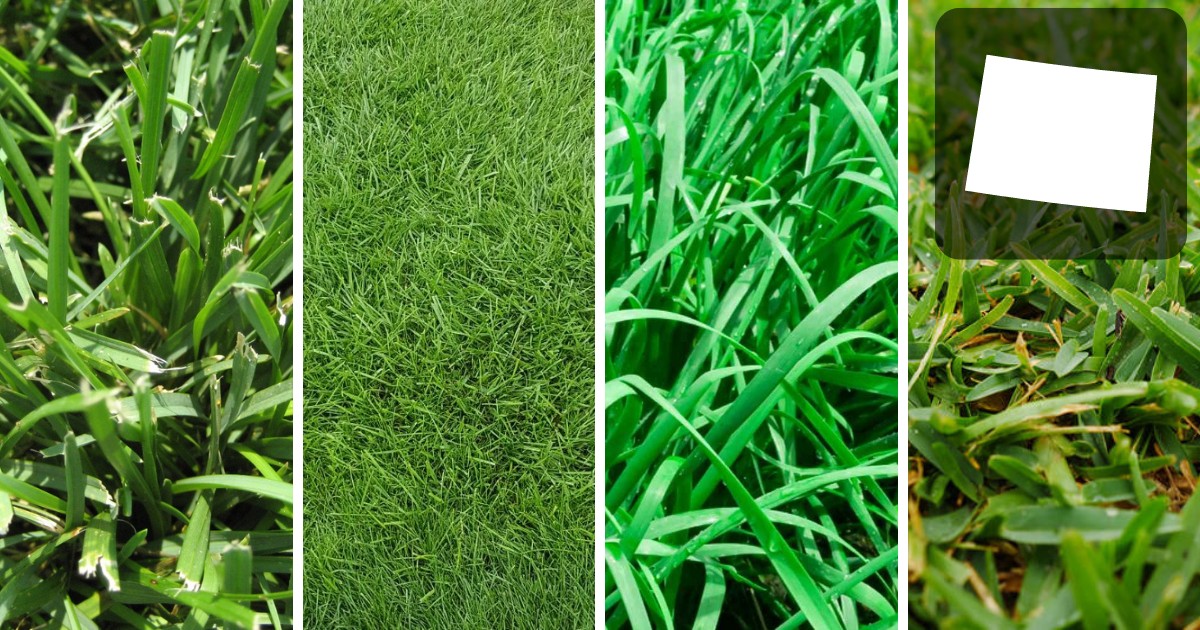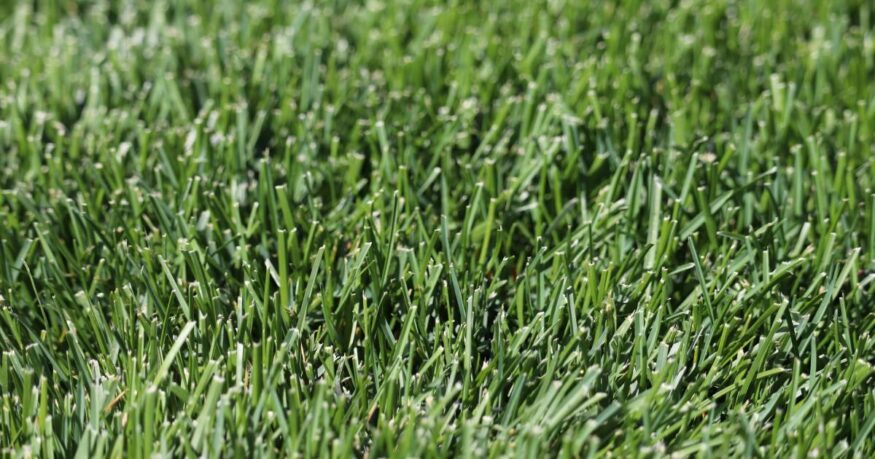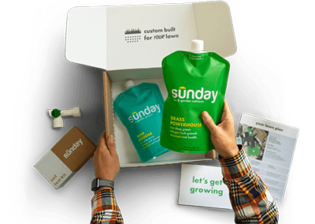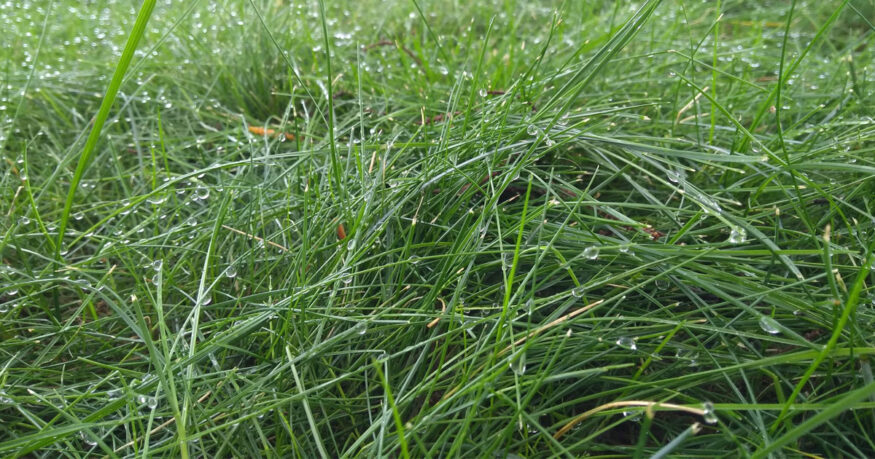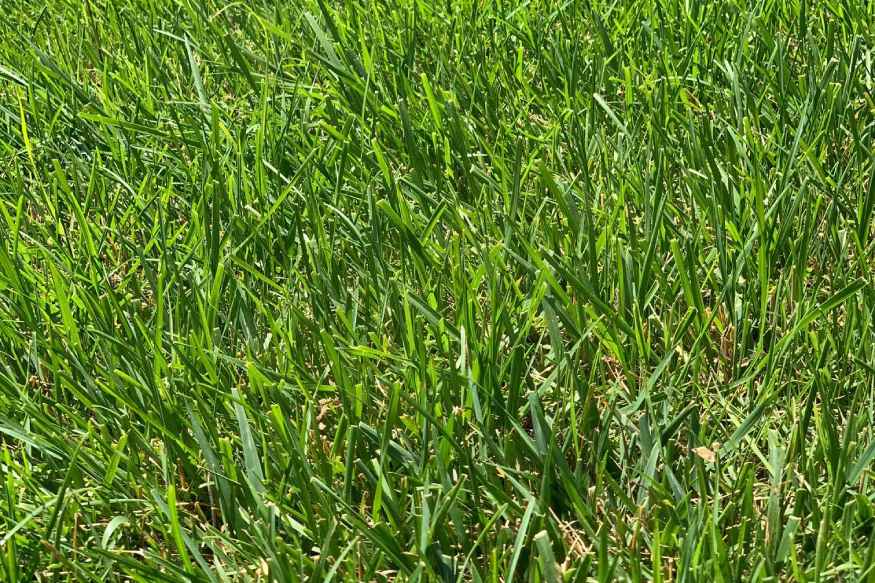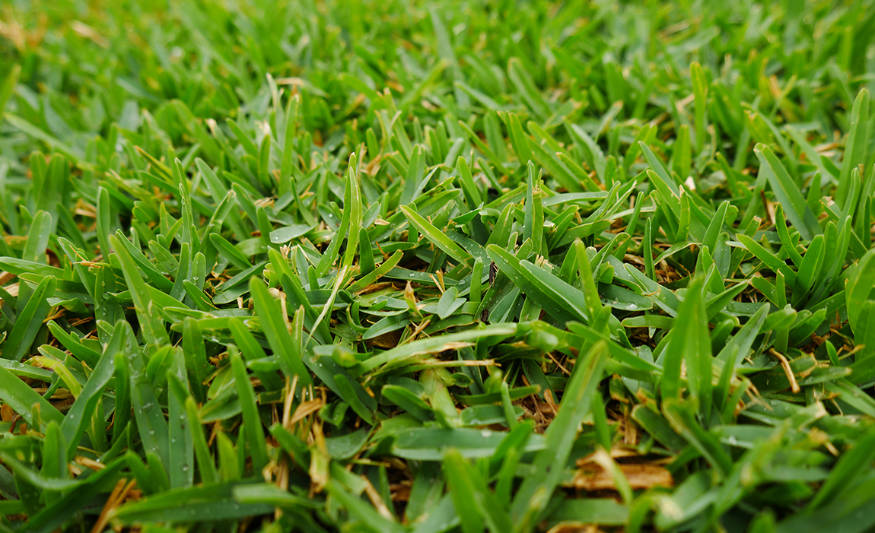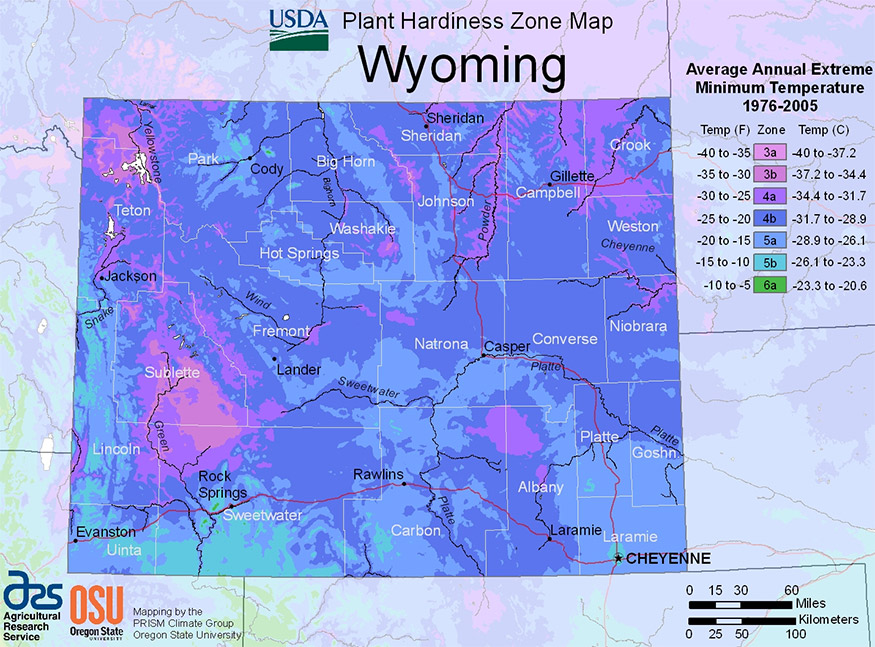Are you ready to transform your lawn into a lush, green paradise? Look no further, as we’re here to help you find the best grass seed for Wyoming.
Spoiler alert: Kentucky bluegrass is a fantastic option, but there are other options depending on your requirements.
Wyoming’s unique environment can make lawn care a challenge, from its dry climate to harsh winters. But fear not – with our expert advice, you’ll be well-equipped to tackle those hurdles and achieve the lawn of your dreams.
Let’s dive in and explore the best grass seed options for your Wyoming yard!
[ez-toc]
Kentucky Bluegrass
| Also Known As | Poa pratensis L. |
| Type of Grass | Cool season perennial |
| Optimal Zones | Northern cool season zone, transition zones |
| Root Structure | Shallow |
| Winter hardiness | Excellent |
| Shade tolerance | Poor to Good |
| Water Requirements | High |
| Drought Tolerance | Poor |
| Self Repair Capacity | Excellent |
| Overall Maintenance Requirements | High |
Why Kentucky Bluegrass is The Most Popular Choice For Wyoming
Kentucky bluegrass is a popular choice for homeowners in Wyoming thanks to its fine texture and beautiful blue-green color. This warm-season grass seed thrives in the state’s climate and can be planted during fall, spring, or winter to ensure it has enough time to grow before the dry season arrives.
One of the key advantages of Kentucky bluegrass is its drought tolerance, which makes it suitable for the variable weather conditions in Wyoming. Additionally, I have found this grass type can withstand heavy foot traffic, making it an ideal option for families and pet owners. It can also be grown in full sun or partial shade, providing flexibility in terms of lawn location.
However, it’s essential for homeowners to be aware that Kentucky bluegrass comes with a few challenges. This species is high maintenance, requiring frequent watering and fertilizing to keep it looking its best. It’s important to water deeply once or twice a week, avoiding shallow watering that can lead to weak root growth. Mowing should be done frequently, maintaining a height of 2-3 inches while being careful not to cut more than one-third of the grass blade at a time.
Fertilizing Kentucky bluegrass is also crucial, with a certified fertilizer blend recommended every 6-8 weeks during the growing season. It’s worth noting that this grass type is not heat-tolerant, which means overseeding may be necessary in hot weather. Likewise, it’s not shade-tolerant, so shady areas may require additional attention and overseeding as well.
In summary, Kentucky bluegrass offers numerous benefits for Wyoming homeowners seeking an attractive and resilient lawn. While it does require a certain level of maintenance, the end result is a lush, verdant lawn that can withstand the challenges of Wyoming’s climate and provide a beautiful outdoor space for years to come.
Looking for the best grass seed for your region?
Our smart lawn plans are designed to work perfectly with your local soil and climate conditions, without any of the toxic stuff.
Use the code EHG20 for an instant $20 discount!
- Personalized lawn care: Custom lawn plans based on soil analysis, climate data, and your specific lawn needs.
- Convenience with a conscience: Products that are not only easy to use but also safe for you, your pets, and the planet.
- Science-backed formulas: Bio-based formulas contain effective, natural ingredients like seaweed, molasses, and iron.
- Expert support: Get one-on-one guidance from a real person and rest easy with Sunday's satisfaction guarantee.
Fine Fescue
| Also Known As | Hard fescue, strong creeping red fescue, slender creeping red fescue, sheep fescue, chewings fescue; Festuca L. |
| Type of Grass | Cool season perennial |
| Optimal Zones | Northern zones |
| Root Structure | Medium |
| Winter hardiness | Excellent |
| Shade tolerance | Excellent |
| Water Requirements | Medium to High |
| Drought Tolerance | Excellent |
| Self Repair Capacity | Limited |
| Overall Maintenance Requirements | Low |
What MakesFine Fescue A Great Grass For Wyoming
Fine fescue is another excellent choice for homeowners in Wyoming for a few different reasons. This grass variety is not only drought-tolerant and capable of growing in poor soil conditions, but it also flourishes in shady areas. Unlike other cool-season grasses, fine fescue requires less fertilizer and irrigation, making it a practical and eco-friendly option for your lawn.
One notable feature of fine fescue is its low maintenance requirements. With a recommended nitrogen input of just 1 to 2 pounds per 1,000 square feet per year under average conditions, this grass type is easy to care for. If your lawn experiences heavier use or has sandy soil, you can increase the nitrogen input up to 4 pounds per 1,000 square feet per year.
When planting fine fescue, it’s common to mix it with Kentucky bluegrass. This is because fine fescue grows in bunches and lacks the spreading ability that Kentucky bluegrass provides. A recommended seeding rate is 1.5 pounds per 1,000 square feet. The combination of these grasses allows for quick establishment, thanks to fine fescue’s excellent seedling vigor.
Watering fine fescue is a breeze, as it requires less water than other cool-season grasses. Just 1 inch of water per week during the growing season is all it needs. Mowing is also simple, with a recommended cutting height of 2 to 3 inches.
While fine fescue has many benefits, it’s important to note that it may not be the best choice for high traffic areas due to its lower wear tolerance. However, for those in Wyoming seeking a low-maintenance, drought-tolerant, and shade-loving lawn, fine fescue is definitely worth considering.
Tall Fescue
| Also Known As | Lolium arundinaceum (formerly Festuca arundinacea) |
| Type of Grass | Cool season perennial |
| Optimal Zones | Northern through transition zones |
| Root Structure | Deep |
| Winter hardiness | Excellent |
| Shade tolerance | High |
| Water Requirements | Medium to High |
| Drought Tolerance | Excellent |
| Self Repair Capacity | Limited |
| Overall Maintenance Requirements | Low |
Why Tall Fescue Grows Well in Wyoming
Tall fescue is an excellent option, thanks to its cool-season adaptability, drought tolerance, and ability to withstand foot traffic. Plus, it’s shade-tolerant, making it versatile for different lawn situations.
To keep your tall fescue lawn looking its best, follow these care tips:
- Water deeply and infrequently, aiming for once or twice a week
- Maintain a mowing height of 2-3 inches for optimal growth
- Use a balanced fertilizer in the fall and spring
However, keep in mind that tall fescue is prone to weeds, so prioritize weed control. Overseeding in the fall helps fill in bare spots and create a dense, lush turf.
While it’s an ideal choice for Wyoming lawns, there are some potential downsides. Tall fescue may be susceptible to diseases if not cared for properly, and it can be challenging to establish from seed. Additionally, its heat tolerance may not be as robust as other grass types, which is worth considering if your area experiences warmer temperatures.
Tall fescue’s adaptability to Wyoming’s climate and its resilience to foot traffic make it an excellent choice for homeowners. By following the care tips above and staying vigilant against weeds and diseases, you can enjoy a lush, healthy lawn that adds beauty and functionality to your home.
Buffalo Grass
| Also Known As | Buffalograss; Buchloe dactyloides |
| Type of Grass | Warm season perennial |
| Optimal Zones | Northern, transition, and southern zones |
| Root Structure | Very deep |
| Winter hardiness | Great |
| Heat tolerance | Great |
| Shade tolerance | Poor |
| Water Requirements | Low |
| Drought Tolerance | Excellent |
| Self Repair Capacity | Moderate to high |
| Overall Maintenance Requirements | Low after establishment |
Why Buffalo Is a Popular Grass seed Choice
Buffalo grass is a top choice for Wyoming homeowners wanting a beautiful, healthy lawn with minimal fuss. This low-maintenance grass is not only dense and fast-spreading, but it’s also drought-tolerant, a significant advantage in the arid climate of Wyoming. Additionally, its ability to grow in poor soil and its resistance to diseases and pests make it a reliable option for a thriving lawn.
As a long-time homeowner, I can attest to the importance of choosing the right grass species for your lawn. Buffalo grass has several key benefits that make it a fantastic option for those living in Wyoming:
- Drought tolerance: With water restrictions in place in many areas, it’s crucial to have a lawn that doesn’t require constant watering. Buffalo grass thrives with minimal water, making it an eco-friendly choice.
- Cold resistance: Wyoming winters can be harsh, but Buffalo grass can tolerate cold temperatures, ensuring that your lawn stays green throughout the year.
- Low maintenance: Homeowners with busy lifestyles will appreciate how little care Buffalo grass requires. It grows well in poor soil, and its resistance to diseases and pests reduces the need for constant attention.
However, it’s worth noting that Buffalo grass may not be the best choice for high-traffic areas or shady spots, as it can be slow to establish and may struggle in these conditions.
To keep your Buffalo grass lawn looking its best, follow these simple care tips:
- Watering: Deeply water your lawn every 7-10 days during the growing season to keep it hydrated without overwatering.
- Fertilizing: Apply a balanced fertilizer once during the first growing season to promote healthy growth.
- Mowing: Maintain a height of 2-3 inches and ensure well-drained soil for optimal growth.
Buffalo grass is an excellent option for Wyoming homeowners seeking a low-maintenance, drought-tolerant, and cold-resistant lawn. With just a few easy care steps, you’ll have a lush, green outdoor space for you and your family to enjoy.
Wyoming’s Climate And Growing Challenges For Lawns
Variable Weather Conditions
Wyoming’s semi-arid climate brings about cold winters and scorching summers, making it a challenge for some grass varieties to thrive year-round. For example, my own lawn struggled during an especially harsh winter, but after researching suitable grass types, I found a more resilient variety to withstand Wyoming’s extreme temperatures.
Alkaline Soil
Wyoming’s soil tends to be alkaline with high pH levels, which can cause difficulties for plants and grasses in absorbing essential nutrients. I noticed my lawn appeared weak and discolored, so I tested the soil pH and found it was too alkaline. By amending the soil with organic matter, I improved nutrient absorption and overall lawn health.
Watering Challenges
Low humidity levels and Wyoming’s semi-arid climate make keeping lawns hydrated a daunting task, particularly during hot summer months. As a homeowner who has experienced similar conditions, I’ve learned to be diligent with watering my lawn to maintain its lush appearance. Installing a reliable irrigation system has been a game-changer in maintaining proper hydration for my lawn.
Altitude Considerations
With an average elevation of 6,700 feet above sea level, Wyoming’s altitude presents unique challenges for certain grass types. I discovered that selecting the right grass variety is essential for a thriving lawn at higher elevations. My recommendation for higher altitudes would be to choose one of the Fine Fescues or Perennial Ryegrass, as both these types can tolerate the higher altitudes and colder temperatures.
In summary, Wyoming’s climate and growing conditions present unique challenges for homeowners striving to maintain a beautiful lawn. By understanding these factors and choosing the appropriate grass type, you can overcome these obstacles and achieve a thriving, attractive lawn.
Looking for the best grass seed for your region?
Our smart lawn plans are designed to work perfectly with your local soil and climate conditions, without any of the toxic stuff.
Use the code EHG20 for an instant $20 discount!
- Personalized lawn care: Custom lawn plans based on soil analysis, climate data, and your specific lawn needs.
- Convenience with a conscience: Products that are not only easy to use but also safe for you, your pets, and the planet.
- Science-backed formulas: Bio-based formulas contain effective, natural ingredients like seaweed, molasses, and iron.
- Expert support: Get one-on-one guidance from a real person and rest easy with Sunday's satisfaction guarantee.
Frequently Asked Questions
What is the best grass seed for Wyoming’s climate?
The best grass seed for Wyoming’s climate is a mix of cool-season grasses such as Kentucky Bluegrass, Fine Fescue, and Perennial Ryegrass. These grasses are well-suited to Wyoming’s semi-arid climate and cold winters, providing a lush, green lawn throughout the growing season.
How do I choose the right grass seed for my Wyoming lawn?
To choose the right grass seed for your Wyoming lawn, consider the following factors: your region’s climate, the intended use of your lawn, and the specific conditions of your property. For instance, if your lawn receives a lot of shade, Fine Fescue may be a better option due to its shade tolerance. In high-traffic areas, consider using a durable grass variety such as Kentucky Bluegrass or Perennial Ryegrass.
When is the best time to plant grass seed in Wyoming?
The best time to plant grass seed in Wyoming is during the spring or early fall when temperatures are mild, and there is adequate moisture in the soil. This allows the grass seed to germinate and establish a healthy root system before the winter months. Avoid planting during the hot, dry summer months or in late fall, as the seed may not have enough time to establish before winter.
What is the recommended seeding rate for Wyoming lawns?
The recommended seeding rate for Wyoming lawns varies depending on the grass variety used. For Kentucky Bluegrass, use a rate of 2-3 pounds per 1,000 square feet. For Fine Fescue, use a rate of 3-5 pounds per 1,000 square feet. And for Perennial Ryegrass, use a rate of 5-9 pounds per 1,000 square feet. Applying the appropriate amount of seed will help ensure a thick, healthy lawn.
How do I prepare my soil for planting grass seed in Wyoming?
To prepare your soil for planting grass seed in Wyoming, begin by removing any existing vegetation, rocks, or debris. Next, use a rototiller or garden fork to loosen the soil to a depth of 4-6 inches, and then level the area using a rake. Apply a layer of compost or organic matter to improve soil fertility and water retention. Finally, use a roller to lightly compact the soil and create a smooth, even surface for seeding.
Do I need to water my Wyoming lawn after seeding?
Yes, it’s crucial to keep the soil consistently moist after seeding your Wyoming lawn. Water the area lightly and frequently, ensuring that the soil remains damp but not overly saturated. As the grass seed germinates and begins to grow, gradually reduce the frequency of watering, allowing the grass to develop a deep, healthy root system. Monitor your lawn for signs of drought stress and adjust your watering schedule accordingly.
What is the proper mowing height for Wyoming lawns?
The proper mowing height for Wyoming lawns depends on the grass variety. For Kentucky Bluegrass, maintain a height of 2-3 inches. For Fine Fescue, a height of 2-2.5 inches is recommended, and for Perennial Ryegrass, maintain a height of 2-3 inches. Regular mowing at the correct height will promote a healthy, dense lawn and help prevent weed growth
